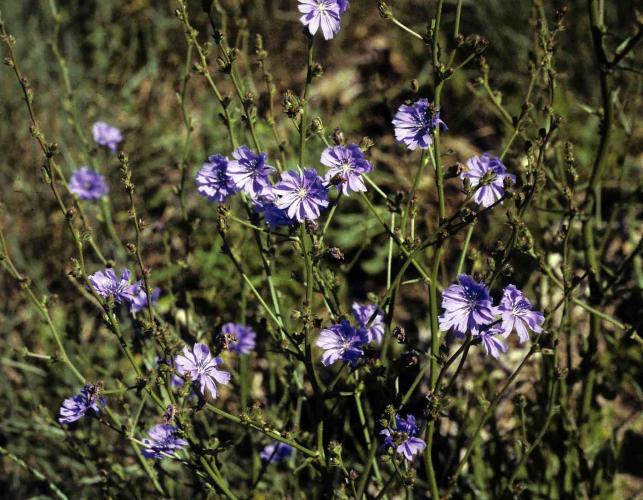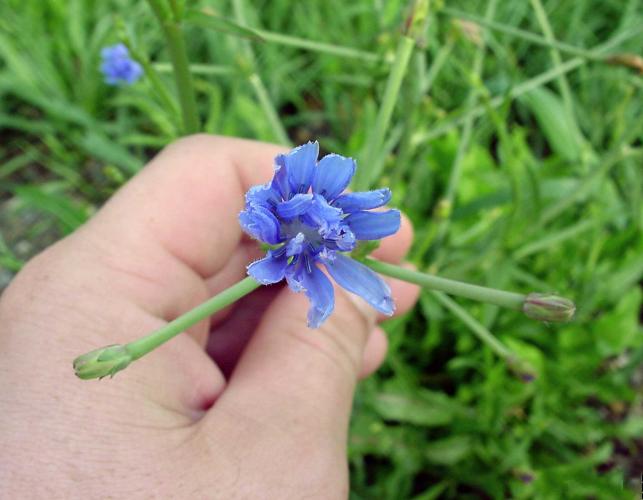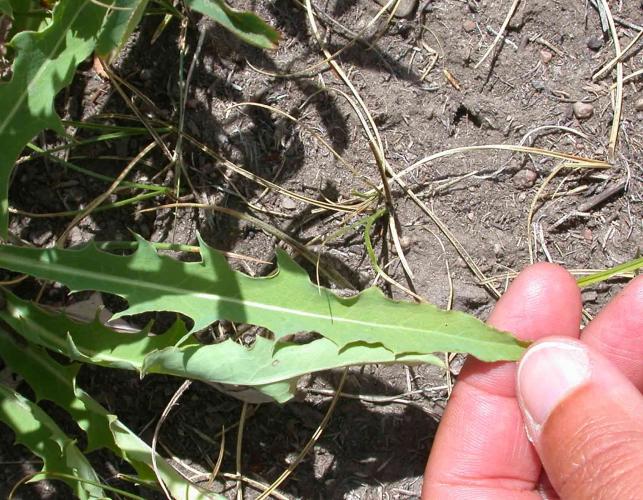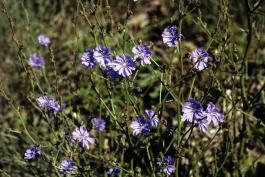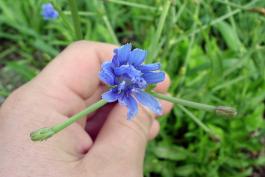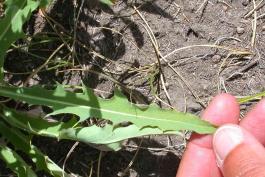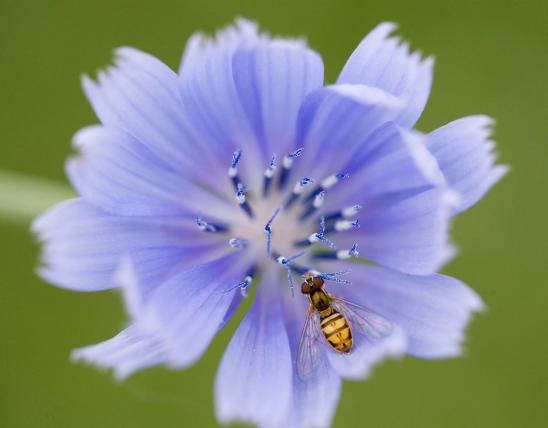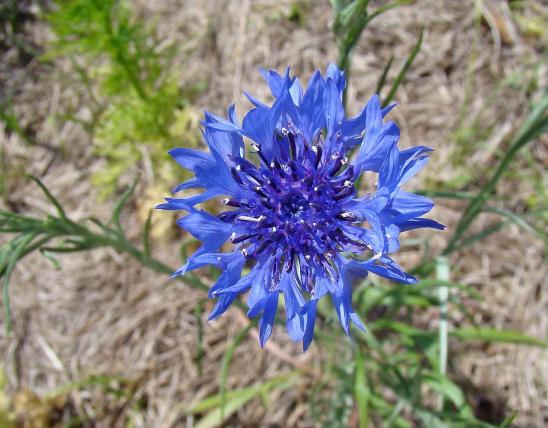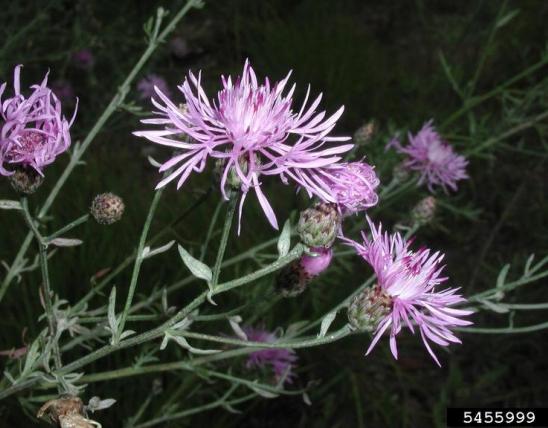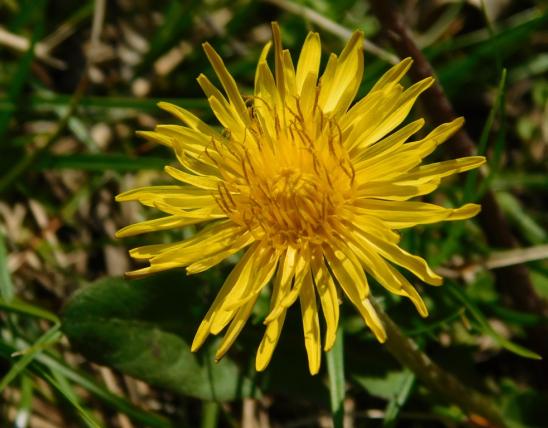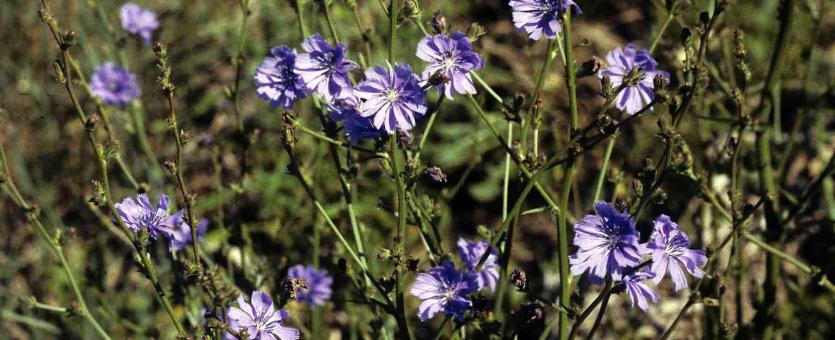
Chicory is a perennial shrubby herb with stiff, angular branches. Flowerheads emerge all along the stems with light blue or white (occasionally pink), strap-shaped ray florets that are toothed at end. Blooms May-October. Basal leaves resemble those of dandelion, with a prominent center vein, triangular lobes, with deep, rounded sinuses. Leaves become much smaller above the base. Upper branch leaves may be entire, without stems, and narrow. This plant bleeds a milky latex. The hairs on leaves and branches may not be very conspicuous.
Similar species: Florida lettuce (Lactuca floridana) has leaves well developed all along the stems, and the seeds have tufts of hair (chicory’s seeds have a low crown of scales); it can be a much larger plant as well. Cornflower (Centaurea cyanus) has leaves that are narrow and linear; the outer florets are enlarged and look like ray florets.
Height: to 3 feet, but will flower just inches above ground if mowed down.
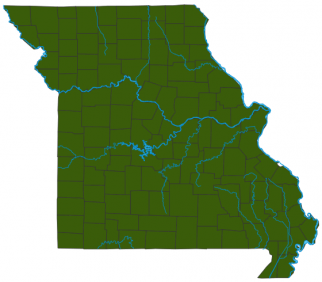
Statewide.
Habitat and Conservation
A common summertime roadside weed. Occurs in fields, pastures, waste areas, roadsides, railroads, and other open, disturbed areas. Like dandelion, chicory is a native of the Old World that has been introduced globally. Like many other weedy plants, it is one of the first to take root in disturbed ground, but it does not compete well in habitats full of established native plants.
Status
A close relative of this plant, in the same genus, is endive (C. endivia), the popular salad vegetable. Worldwide, there are only 6 species in the genus Cichorium. None are native to the New World, though many of them have been introduced.
Human Connections
The roots are roasted and used as a flavoring for coffee. Chicory has a long history of medicinal uses. The greens can be eaten raw or cooked. The roots are a source for commercial inulin, which is used as a soluble fiber dietary supplement and is a fat substitute in yogurt and other foods.
Ecosystem Connections
Bees and other insects gather nectar and pollen from the flowers, pollinating them in the process. The foliage is eaten by a variety of herbivorous insects, including grasshoppers, beetles, and the larvae of butterflies and moths.
